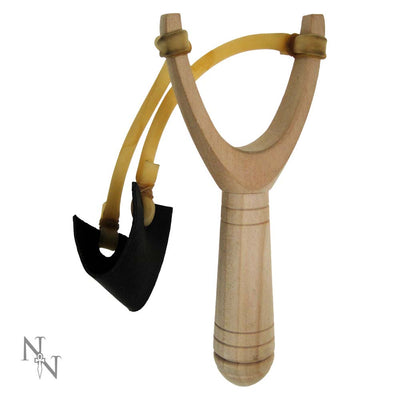Costume Safety
At MAD Distribution (Int) Ltd we take safety very seriously and invest heavily to ensure the integrity and safety of all our products.
You may be aware of recent publicity surrounding children’s fancy dress costumes catching fire. In particular one recent story involving a TV presenter’s daughter at Halloween. Here at MAD Distribution (Int) Ltd we would like to assure you that our costumes are compliant with all regulations regarding children’s safety. In particular we regularly re-test our costumes to ensure they are compliant with flammability standards at national and European level.
We ensure that all of our fancy-dress costumes are manufactured and rigorously tested to comply with the European regulations. This is particularly important for children’s costumes, which are defined as Toys under EU regulations as there is an implied hazard due to the “play factor” involved whilst wearing dress-up.
Children’s costumes must comply with stringent flammability requirements that do not apply, by law, to children's clothing with the exception of some sleepwear (night dresses and dressing gowns). There are very few legal requirements dealing with the flammability of everyday children’s clothing. Many clothing items can catch fire and burn when exposed to naked flames and some manufacturers only voluntarily add "keep away from fire" warnings. However, children’s costumes and dress up is regulated and must comply with flammability requirements.
All of our children’s costumes and accessories are tested to make sure they comply with the EN 71 set of standards in conjunction with our nominated safety partner Intertek - a worldwide recognised safety testing bureau. Every order is batch tested and verified as compliant at source by Intertek; unlike other suppliers our safety certificates are continually updated. All children’s costumes including Halloween, are further batch tested once received in the UK Warehouse to guarantee quality and safety assurance.
EN 71 is a Europe-wide standard for toy safety and is in 12 parts. Part 2 specifically deals with the flammability potential of a toy. This of course is paramount for a fancy dress costume. To perform the test a 40mm flame (similar to a flame from a match or a candle) is applied to samples of the component materials under controlled conditions. Depending on the type of material, where it appears on the costume and its surface area, either the flame spread rate or its self-extinguishing properties are measured against the requirements set-out in the standard.
Specifically with regards to children’s fancy dress costumes and capes the official guidance is as follows:
Toy disguise costumes and toys intended to be worn by a child in play. The rate of spread of flame of the test sample shall not exceed 30 mm/or the test sample shall self-extinguish. If the rate of spread of flame is between 10 mm/s and 30 mm/s, the appropriate part(s) of the toy and the packaging shall be permanently marked with the following warning: “Warning. Keep away from fire”
As a responsible supplier, we take the precaution to label all of our children’s costumes with fire warning: "Warning. Keep away from fire" irrespective of the burn rate within the regulatory limit. Furthermore, all Toys that are sold within the European Union are required to bear the CE mark. This is the manufacturer’s declaration that the product meets the European Toy Safety Directive (2009/48/EC), and has undergone a variety of product tests to ensure that it is safe for use. We would also like to remind you that children should not be permitted to play near naked flames, whether or not they are wearing toy costumes. When flames are present, adult supervision is vital and children should stay a safe distance from them.
Do not buy cheap dress-up from unrecognisable importers and do not trust counterfeit goods. These will not have had to undergo the processes as listed above. Check the label or packaging contains the manufacturers name, address, postcode or phone number and a registered trademark. Ensure the product is accompanied by instructions and safety information. CE markings can be faked by counterfeiters, check the logo is correct, sometimes the wrong logo is used entirely, check the middle line of the E as it should be shorter than in other parts.
You may be aware of recent publicity surrounding children’s fancy dress costumes catching fire. In particular one recent story involving a TV presenter’s daughter at Halloween. Here at MAD Distribution (Int) Ltd we would like to assure you that our costumes are compliant with all regulations regarding children’s safety. In particular we regularly re-test our costumes to ensure they are compliant with flammability standards at national and European level.
We ensure that all of our fancy-dress costumes are manufactured and rigorously tested to comply with the European regulations. This is particularly important for children’s costumes, which are defined as Toys under EU regulations as there is an implied hazard due to the “play factor” involved whilst wearing dress-up.
Children’s costumes must comply with stringent flammability requirements that do not apply, by law, to children's clothing with the exception of some sleepwear (night dresses and dressing gowns). There are very few legal requirements dealing with the flammability of everyday children’s clothing. Many clothing items can catch fire and burn when exposed to naked flames and some manufacturers only voluntarily add "keep away from fire" warnings. However, children’s costumes and dress up is regulated and must comply with flammability requirements.
All of our children’s costumes and accessories are tested to make sure they comply with the EN 71 set of standards in conjunction with our nominated safety partner Intertek - a worldwide recognised safety testing bureau. Every order is batch tested and verified as compliant at source by Intertek; unlike other suppliers our safety certificates are continually updated. All children’s costumes including Halloween, are further batch tested once received in the UK Warehouse to guarantee quality and safety assurance.
EN 71 is a Europe-wide standard for toy safety and is in 12 parts. Part 2 specifically deals with the flammability potential of a toy. This of course is paramount for a fancy dress costume. To perform the test a 40mm flame (similar to a flame from a match or a candle) is applied to samples of the component materials under controlled conditions. Depending on the type of material, where it appears on the costume and its surface area, either the flame spread rate or its self-extinguishing properties are measured against the requirements set-out in the standard.
Specifically with regards to children’s fancy dress costumes and capes the official guidance is as follows:
Toy disguise costumes and toys intended to be worn by a child in play. The rate of spread of flame of the test sample shall not exceed 30 mm/or the test sample shall self-extinguish. If the rate of spread of flame is between 10 mm/s and 30 mm/s, the appropriate part(s) of the toy and the packaging shall be permanently marked with the following warning: “Warning. Keep away from fire”
As a responsible supplier, we take the precaution to label all of our children’s costumes with fire warning: "Warning. Keep away from fire" irrespective of the burn rate within the regulatory limit. Furthermore, all Toys that are sold within the European Union are required to bear the CE mark. This is the manufacturer’s declaration that the product meets the European Toy Safety Directive (2009/48/EC), and has undergone a variety of product tests to ensure that it is safe for use. We would also like to remind you that children should not be permitted to play near naked flames, whether or not they are wearing toy costumes. When flames are present, adult supervision is vital and children should stay a safe distance from them.
Do not buy cheap dress-up from unrecognisable importers and do not trust counterfeit goods. These will not have had to undergo the processes as listed above. Check the label or packaging contains the manufacturers name, address, postcode or phone number and a registered trademark. Ensure the product is accompanied by instructions and safety information. CE markings can be faked by counterfeiters, check the logo is correct, sometimes the wrong logo is used entirely, check the middle line of the E as it should be shorter than in other parts.









